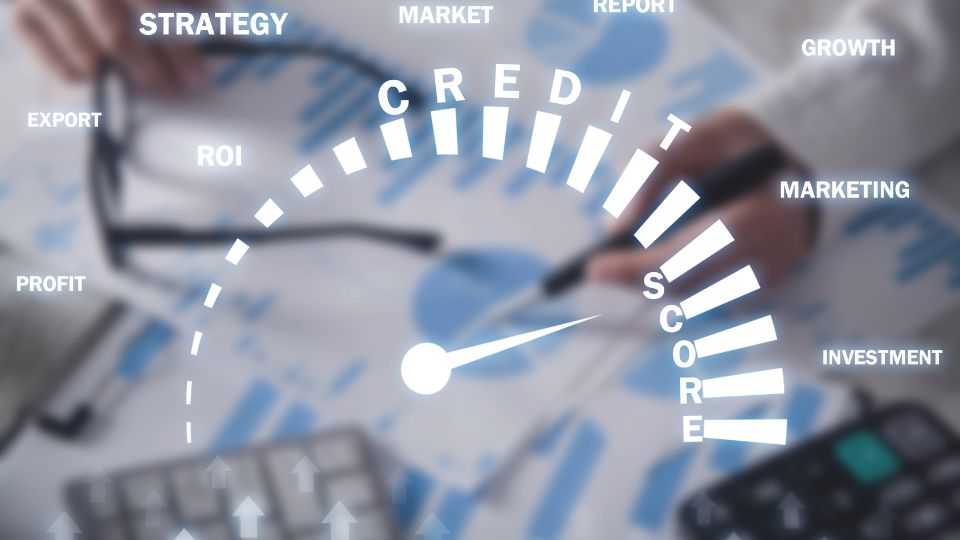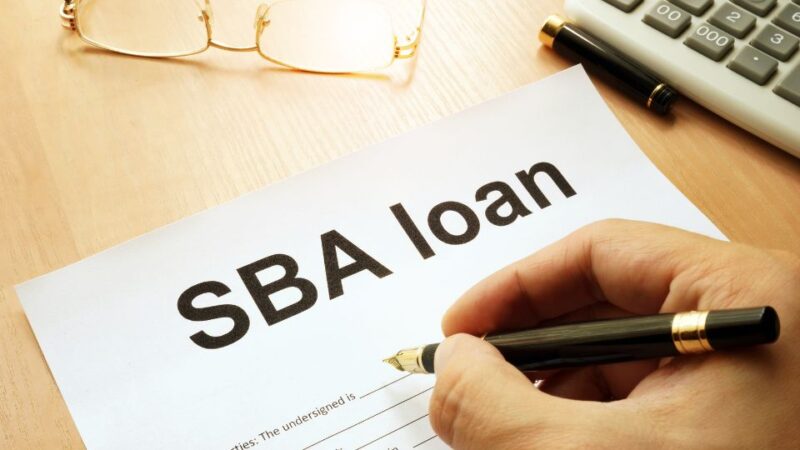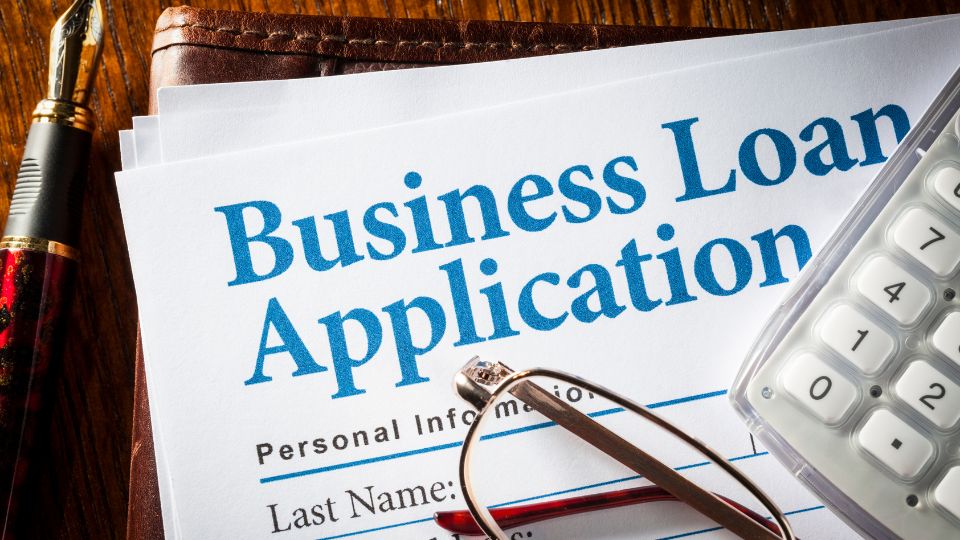Small business SBA loans may be the key to creating a much bigger company by accessing government-backed financing.
In the ever-evolving landscape of small businesses, access to financing can be the key that unlocks growth and success. At the forefront of this financial support is the Small Business Administration (SBA), a federal agency dedicated to aiding small enterprises. With its diverse range of loan programs, the SBA plays a pivotal role in providing the necessary capital for businesses to flourish.
Small businesses are the lifeblood of the economy, driving innovation, creating jobs, and fostering entrepreneurship. However, realizing their potential often hinges on securing funding. This comprehensive guide aims to demystify the world of small business SBA loans, shedding light on the intricacies of these financial tools and their significance for small business owners.
In this article, we will explore the various types of small business SBA loans, the qualifications and application process, the benefits and drawbacks of SBA funding, and offer invaluable tips for success. Whether you’re a startup seeking your initial boost or an established small business aiming for expansion, this guide will equip you with the knowledge needed to harness the potential of small business SBA loans and fuel your journey toward growth and prosperity.
Understanding Small Business SBA Loans
Purpose and Mission of the SBA:
The Small Business Administration (SBA) is a vital federal agency established with a clear mission: to support and empower small businesses across the United States. Since its inception in 1953, the SBA has played a pivotal role in fostering entrepreneurship, job creation, and economic growth. Its primary objective is to provide small businesses with access to the resources and financial tools they need to thrive.
At the heart of the SBA’s mission is the recognition that small businesses are the backbone of the American economy. They drive innovation, strengthen local communities, and contribute significantly to the nation’s overall economic well-being. The SBA’s purpose is to ensure that these businesses have the support they require to start, grow, and succeed.
Types of small business SBA Loans:

The SBA offers a range of loan programs designed to cater to the diverse needs of small businesses. Some of the most prominent SBA loan programs include:
- SBA 7(a) Loan: This is the SBA’s flagship loan program, offering versatile funding for various purposes, including working capital, equipment purchase, and business expansion. It provides loan guarantees to approved lenders, making it easier for small businesses to access financing.
- SBA 504/CDC Loan: Designed for real estate and long-term equipment purchases, the 504/CDC loan program helps small businesses acquire fixed assets with favorable terms. It involves collaboration between a Certified Development Company (CDC), a traditional lender, and the SBA.
- SBA Microloan Program: Aimed at startups and small businesses in underserved communities, this program provides small loans of up to $50,000. Microloans can be used for a variety of purposes, such as working capital, inventory, or equipment.
- SBA Disaster Loans: In times of natural disasters or economic crises, the SBA offers disaster loans to help small businesses recover and rebuild. These loans are a lifeline for businesses facing unexpected challenges.
Key Benefits of Small Business SBA Loans:
Small business SBA loans are highly sought after by small business owners for several compelling reasons:
- Lower Interest Rates: Small business SBA loans typically offer lower interest rates compared to conventional loans, making them more affordable for small businesses.
- Longer Repayment Terms: Small business SBA loans often come with longer repayment terms, reducing the monthly financial burden on borrowers.
- Easier Qualification: While small business SBA loans have specific eligibility criteria, they are generally more accessible to small businesses, including startups, than traditional bank loans.
- Flexible Use of Funds: small business SBA loans can be used for a wide range of purposes, from working capital and inventory to real estate and equipment, providing businesses with flexibility.
- Loan Guarantees: The SBA provides guarantees to lenders, reducing their risk and encouraging them to lend to small businesses that may not qualify for conventional loans.
Related: Unlocking Business Growth: Mastering Equipment Finance Strategies
An In-Depth Look at the Small Business SBA Loan Programs
Let’s explore three primary small business SBA loan programs in-depth, each with its specific purposes, eligibility criteria, and terms.
1. SBA 7(a) Loans:
- Purpose: SBA 7(a) loans are the most versatile of the small business SBA loan programs. They can be used for a wide range of purposes, including working capital, equipment purchase, debt refinancing, and business acquisition. These loans are especially beneficial for businesses with various financing needs.
- Eligibility Criteria: To qualify for an SBA 7(a) loan, a business must meet certain criteria, including being a for-profit entity, operating legally, and demonstrating the ability to repay the loan. Additionally, the business should not be engaged in lending, speculation, or pyramid sales.
- Loan Amounts: SBA 7(a) loans can be as small as $50,000 or reach up to $5 million, making them suitable for both small startups and established businesses.
- Interest Rates and Terms: Interest rates on 7(a) loans vary but are typically competitive. The terms for repayment depend on the specific use of the loan but can extend up to 10 years for working capital and up to 25 years for real estate.
2. SBA 504/CDC Loans:
- Purpose: SBA 504/CDC loans are specifically designed for businesses looking to acquire or improve commercial real estate or purchase long-term assets like heavy machinery. This program encourages economic development and job creation through real estate investment.
- Eligibility Criteria: Eligible businesses must operate as for-profit entities, have a tangible net worth of less than $15 million, and demonstrate that the project will create or retain jobs in the community.
- Loan Amounts: SBA 504 loans can go up to $5.5 million for standard projects, but they can exceed $5.5 million for projects that meet certain public policy goals, such as energy efficiency or rural development.
- Interest Rates and Terms: The interest rates for SBA 504 loans are fixed, and the repayment terms typically extend up to 25 years for real estate and 10 years for equipment.
3. SBA Microloan Program:
- Purpose: The SBA Microloan program targets startups and small businesses in underserved communities. These microloans can be used for working capital, inventory, supplies, furniture, and equipment.
- Eligibility Criteria: Businesses seeking microloans must meet SBA size standards, have adequate collateral, and demonstrate the ability to repay the loan.
- Loan Amounts: Microloans are typically smaller, with maximum loan amounts capped at $50,000. However, the average microloan is often closer to $13,000.
- Interest Rates and Terms: Interest rates on microloans vary but are typically higher than those of larger SBA loans. The repayment terms can extend up to six years.
In summary, the Small Business Administration offers a range of loan programs to accommodate the diverse needs of small businesses. SBA 7(a) loans provide versatility, while 504/CDC loans focus on real estate and long-term assets. The Microloan program supports startups and underserved communities.
Eligibility criteria, loan amounts, interest rates, and terms vary among these programs, providing small business owners with options tailored to their specific financial needs and goals.
Qualifying for Small Business SBA Loans
Qualifying for Small Business SBA loans is a crucial step in accessing the financial support that these loans can provide. To ensure your small business meets the eligibility criteria and improves your chances of approval, it’s essential to understand the requirements, factors considered by the SBA and lenders, and strategies for qualification.

Eligibility Requirements:
The SBA sets specific eligibility criteria that businesses must meet to qualify for its loan programs. While requirements may vary slightly depending on the loan type, some common eligibility criteria include:
- Size of the Business: Your business typically needs to meet the SBA’s size standards, which vary by industry and are based on factors like annual revenue and the number of employees.
- Operational Status: The business must be for-profit and legally operating within the United States.
- Owner’s Equity: Owners should have invested their own time and money into the business, demonstrating a personal commitment to its success.
- Use of Funds: small business SBA loans have specific purposes, so you must use the funds for approved uses like working capital, real estate acquisition, or equipment purchase.
- Good Character: The SBA assesses the character of the business owners, looking for a history of responsible financial behavior.
Factors Considered by the SBA and Lenders:
When evaluating SBA loan applications, both the SBA and participating lenders consider various factors, including:
- Creditworthiness: Your personal and business credit history plays a significant role. A strong credit score and a history of responsible credit management can boost your chances.
- Financial Statements: Lenders review your financial statements, including income statements, balance sheets, and cash flow statements, to assess your business’s financial health and ability to repay the loan.
- Collateral: While small business SBA loans are less reliant on collateral than traditional loans, some collateral may be required to secure the loan.
- Business Plan: A well-thought-out business plan that outlines your business’s goals, operations, and repayment strategy can demonstrate your commitment to success.
- Industry and Market Analysis: Lenders may assess your business’s industry, market trends, and competition to gauge its viability.
Tips and Strategies for Qualification:
To improve your chances of qualifying for small business SBA loans:
- Review Eligibility Requirements: Ensure your business meets the SBA’s size standards and eligibility criteria for the specific loan program you’re interested in.
- Build Strong Credit: Work on improving your personal and business credit scores by managing debts responsibly and addressing any negative items on your credit reports.
- Prepare a Comprehensive Business Plan: Craft a detailed business plan that outlines your business’s strengths, market opportunity, and repayment strategy.
- Gather Required Documentation: Organize all necessary financial documents, including tax returns, financial statements, and business licenses, to streamline the application process.
- Seek Expert Guidance: Consider working with financial advisors or consultants who specialize in small business SBA loans to navigate the application process and address any potential weaknesses in your application.
Qualifying for an SBA loan requires meeting specific eligibility criteria, understanding the factors considered by the SBA and lenders, and implementing strategies to strengthen your application.
By carefully preparing your business and documentation, improving your creditworthiness, and seeking professional guidance when needed, you can enhance your prospects of securing the SBA funding that can help your business thrive.
Application and Approval Process
Navigating the application and approval process for Small Business SBA loans involves several key steps, from initial preparation to final approval. Understanding this process can help small business owners better prepare and improve their chances of securing SBA funding.
Step-by-Step Application Process:
- Preparation: Begin by thoroughly reviewing the small business SBA loans and programs and identifying the one that best suits your business needs. Prepare a comprehensive business plan that outlines your objectives, financial projections, and repayment strategy.
- Choose an SBA Lender: Find a suitable SBA-approved lender, such as a bank or credit union, that offers the specific SBA loan program you’re interested in. Each lender may have slightly different requirements and application procedures.
- Loan Application: Complete the SBA loan application provided by your chosen lender. This application will require detailed information about your business, including financial statements, business history, and the intended use of the loan proceeds.
- Submission: Submit the completed application and all required documentation to your chosen lender. Be prepared to provide personal and business financial statements, tax returns, and any additional documentation requested.
- Lender Evaluation: The lender will evaluate your application, assessing your creditworthiness, the viability of your business plan, and your ability to repay the loan. They may request further clarification or additional documentation during this stage.
- SBA Review: Once the lender completes its evaluation, they will forward your application to the SBA for review. The SBA will assess whether your application complies with their guidelines and whether the loan qualifies for an SBA guarantee.
- SBA Approval: If the SBA approves your application, they will issue a Loan Authorization. This document outlines the loan terms, conditions, and any collateral requirements. You will need to sign and return it to the lender.
- Closing: After receiving your signed Loan Authorization, the lender will work with you to finalize the loan’s closing details. This includes determining collateral, reviewing legal documents, and finalizing the loan terms.
- Disbursement: Once the loan is closed, the lender will disburse the funds as outlined in the Loan Authorization. Funds can be used for approved purposes, such as working capital, equipment purchase, or real estate acquisition.
Approval and Documentation:
SBA lenders evaluate applications based on creditworthiness, business stability, and the ability to repay the loan. They also consider the specific requirements of the chosen SBA loan program.
The timeline for SBA loan approval can vary but often takes several weeks to months, depending on the complexity of the application and the lender’s processing speed.
Documentation required for SBA loan applications typically includes:
- Business and personal tax returns.
- Personal financial statements for owners.
- Business plan with financial projections.
- Resumes of key management.
- Business debt schedule.
- Collateral documentation (if required).
The SBA loan application and approval process involves multiple steps, from preparation and lender selection to closing and disbursement.
Understanding the specific requirements of your chosen SBA loan program and working closely with an experienced lender can facilitate a smoother application process and improve your chances of securing the financing your small business needs.
Related: Secure Your Legacy with Business Succession Planning
Related: Explore the Top 5 Business Financing Trends in 2024 & Beyond
Benefits and Drawbacks of Small Business SBA Loans
Small Business Administration (SBA) loans offer a range of benefits that can make them an attractive financing option for small businesses. However, they also come with certain drawbacks that applicants should consider.
Advantages of small business SBA Loans:
- Lower Interest Rates: Small business SBA loans typically feature lower interest rates compared to conventional loans. This can significantly reduce the cost of borrowing for small businesses, making it more affordable to access capital.
- Longer Repayment Terms: Small business SBA loans often come with longer repayment terms, especially for real estate and equipment financing. Longer terms mean lower monthly payments, reducing the strain on a business’s cash flow.
- Flexible Use of Funds: Small business SBA loans offer flexibility in how the funds can be used. Whether you need capital for working capital, expansion, debt consolidation, or real estate acquisition, SBA loans can accommodate various business needs.
- Lower Down Payments: Small business SBA loans may require smaller down payments than traditional loans, conserving your business’s cash reserves for other operational needs.
Drawbacks of Small Business SBA Loans:
- Strict Eligibility Requirements: Small Business SBA loans have specific eligibility criteria, such as size standards, which may exclude larger businesses. Businesses must also demonstrate a strong credit history and repayment ability.
- Lengthy Application Process: The application and approval process for Small Business SBA loans can be time-consuming. It may take several weeks to months to secure financing, which may not be ideal for businesses in need of immediate funds.
- Collateral Requirements: While Small Business SBA loans typically require less collateral than traditional loans, some collateral may still be necessary, which can pose a risk to business owners.
Related: Choose Wisely: Short vs Long Business Loan Terms Compared
Tips for Success
Navigating the Small Business Administration (SBA) loan process successfully requires careful planning and attention to detail. Here are practical tips to help small business owners increase their chances of securing SBA financing:
- Understand Your Business Needs: Before applying for an SBA loan, thoroughly assess your business’s financial needs. Determine how much capital you require and how you plan to use it. This clarity will guide your loan application and ensure you’re requesting the right amount.
- Prepare a Comprehensive Business Plan: Develop a detailed business plan that outlines your business’s goals, operations, financial projections, and repayment strategy. A well-crafted business plan not only serves as a roadmap for your business but also demonstrates your commitment and vision to lenders.
- Maintain Strong Credit: Both personal and business credit scores matter when applying for SBA loans. Work on improving your creditworthiness by paying bills on time, reducing outstanding debts, and addressing any credit issues. A solid credit history enhances your eligibility.
- Organize Financial Documentation: Gather and organize all required financial documents, including tax returns, financial statements, and business licenses. Ensure your financial records are accurate and up to date to streamline the application process.
- Seek Professional Guidance: Consider working with experienced financial advisors or consultants who specialize in SBA loans. They can help you navigate the complex application process, provide valuable insights, and increase your chances of approval.
- Choose the Right SBA Loan Program: Select the SBA loan program that aligns with your business’s needs. Each program has specific eligibility criteria and purposes, so choose the one that best suits your financing requirements.
- Build Strong Relationships: Establish and nurture relationships with SBA-approved lenders. A positive working relationship with a lender can enhance your chances of approval and expedite the loan process.
- Prepare for a Personal Guarantee: In many cases, SBA loans require a personal guarantee from the business owner. Be prepared to put your personal assets on the line, and understand the implications of a personal guarantee.
- Maintain Financial Literacy: Invest time in improving your financial literacy. Understanding financial statements, loan terms, and interest rates will empower you to make informed decisions throughout the loan process and beyond.
- Be Patient and Persistent: SBA loan approval processes can be lengthy. Be patient, follow up on your application’s progress, and provide any requested information promptly. Persistence can pay off in securing the financing your business needs.
Successfully navigating the SBA loan process requires thorough preparation, a compelling business plan, and attention to financial details. By following these tips and seeking professional guidance when necessary, small business owners can improve their chances of obtaining SBA financing and achieving their business goals.
Final Thoughts and Resources
To aspiring entrepreneurs and established small business owners, we encourage you to explore SBA loans as a viable financing option. These loans not only provide essential capital but also foster economic growth, job creation, and community development.
As you embark on your business journey, remember that the right financing can be the catalyst for realizing your vision. Consider SBA loans as your partner in achieving small business success.
Resources:





